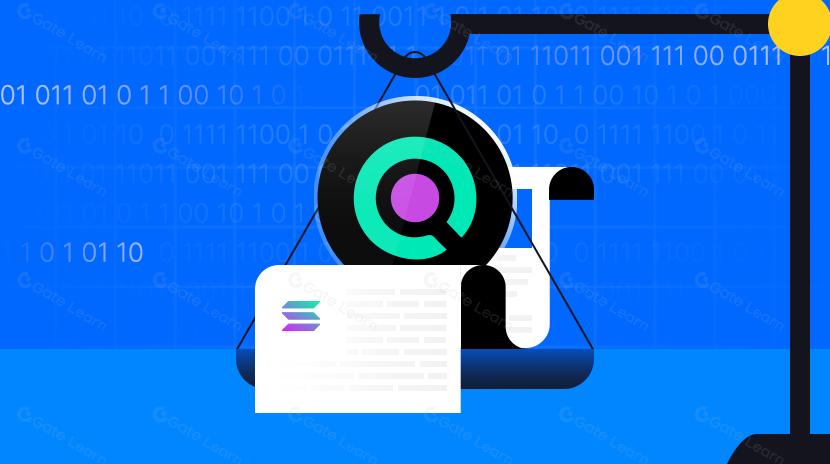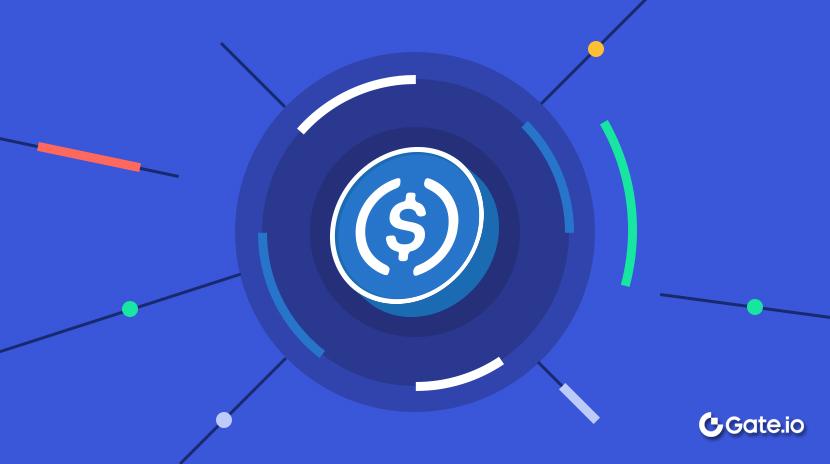Gate Research: Événements Web3 et développements technologiques en cryptomonnaie (28 mars - 2 avril 2025)
Préface
Au cours de la semaine du 28 mars au 2 avril 2025, Sonic Labs (une équipe au sein de l'écosystème Fantom) a annoncé le 28 mars via la plateforme X le lancement d'un nouveau protocole de consensus, SonicCS 2.0, améliorant considérablement les performances et l'efficacité des ressources. La plateforme de projet meme on-chain Four.Meme a officiellement annoncé une prochaine mise à niveau de la plateforme, se migrant vers le pool de liquidité PancakeSwap V2. Le co-fondateur d'Ethereum, Vitalik Buterin, a publié Un plan simple de sécurité L2 et de finalisation, en exposant trois orientations principales pour améliorer la sécurité et la finalité des transactions sur les réseaux Ethereum de couche 2. La deuxième phase du Mainnet Babylon Genesis est sur le point d'être lancée, avec pour objectif principal de devenir la première chaîne de couche 1 sécurisée par le jalonnement de Bitcoin. La plateforme de science décentralisée (DeSci) Bio Protocol a officiellement lancé sa mise à niveau V1, passant d'un modèle d'accélérateur traditionnel à une plateforme de financement scientifique ouverte et automatisée.
Abstrait
- Sonic Labs s'apprête à lancer SonicCS 2.0, visant à doubler la vitesse de consensus et à réduire de manière significative l'utilisation des ressources.
- Four.Meme a annoncé sa migration vers PancakeSwap V2.
- Vitalik Buterin a publié une feuille de route de sécurité pour Ethereum Layer 2, en mettant l'accent sur la scalabilité, les systèmes de preuve et l'unification.
- La deuxième phase du Babylon Genesis Mainnet est sur le point d'entrer en service.
- Bio Protocol a lancé sa mise à niveau V1, introduisant une plateforme de lancement sans permission et des agents alimentés par l'IA.
Évolutions clés et mises à jour
3/28 Sonic Labs va lancer SonicCS 2.0 avec des améliorations majeures des performances
Le 28 mars, Sonic Labs, une équipe principale au sein de l'écosystème Fantom, a annoncé via la plateforme X qu'elle lancera un nouveau protocole de consensus, SonicCS 2.0. La mise à niveau promet de doubler la vitesse de consensus et de réduire l'utilisation de la mémoire d'environ 68 %, améliorant considérablement les performances et l'efficacité des ressources. Le cofondateur Andre Cronje a déclaré que l'équipe continuera d'optimiser le protocole jusqu'à ce qu'il atteigne les limites physiques des performances, soulignant ainsi leur engagement envers une architecture haute performance.
SonicCS est un composant clé de l'infrastructure de nouvelle génération de Fantom. Il est conçu pour offrir une plus grande évolutivité aux blockchains de couche 1 en maintenant une latence faible et un débit élevé tout en réduisant considérablement la consommation de ressources. Le déploiement de SonicCS 2.0 devrait améliorer l'expérience on-chain pour diverses applications de l'écosystème, y compris la DeFi, l'IA et les jeux.
D'un point de vue du marché, des améliorations de performance comme celles-ci peuvent ne pas avoir un impact immédiat sur les prix des jetons, mais elles jouent un rôle essentiel dans l'accessibilité des développeurs et l'expérience utilisateur. Si le déploiement se déroule sans heurts, SonicCS 2.0 pourrait renforcer l'avantage technique de Fantom et attirer davantage de constructeurs vers son écosystème en croissance. [1]
29/3 Vitalik Buterin publie la feuille de route de sécurité de la couche 2 d'Ethereum axée sur la scalabilité, les mécanismes de preuve et l'unification
Le 29 mars, Vitalik Buterin, co-fondateur d'Ethereum, a publié Une feuille de route simple pour la sécurité de niveau 2 et la finalisation, décrivant trois orientations principales pour améliorer la sécurité et la finalité de l'écosystème de couche 2 d'Ethereum. L'objectif est de permettre une mise à l'échelle plus efficace et moins dépendante de la confiance à travers le réseau Ethereum.
La prochaine mise à niveau de Pectra étendra l'espace blob, et la mise à niveau de Fusaka prévue pour plus tard cette année devrait encore augmenter la capacité des données. En même temps, les avancées de la technologie ZK-EVM réduisent significativement le temps de finalité. Les améliorations futures se concentreront sur l'extension de l'espace blob, l'introduction de mécanismes de preuve hybrides et la construction d'une couche d'agrégation de preuve ZK unifiée. Ces étapes visent à améliorer l'efficacité et la sécurité tout en réduisant la dépendance à l'égard de toute voie technique unique et en réduisant les coûts de gaz.
Cette feuille de route fournit des orientations claires pour la prochaine étape de mise à l'échelle de la couche 2 et de minimisation de la confiance. Dans le contexte de la demande croissante d'activité on-chain et d'interactions cross-chain, la mise à l'échelle du blob et les systèmes de preuve unifiés devraient jouer un rôle clé dans l'amélioration de l'expérience utilisateur et le soutien à la maturité de l'écosystème. Alors que l'infrastructure continue d'évoluer, les solutions de couche 2 d'Ethereum sont sur le point d'atteindre de nouveaux niveaux de haute performance et de faible latence. [2]
3/30 Four.Meme Annonce la Migration vers PancakeSwap V2
Le 30 mars, la plateforme de projet de meme sur chaîne, Four.Meme, a officiellement annoncé une mise à niveau de la plateforme prévue pour le 31 mars, qui comprend une migration vers le pool de liquidité PancakeSwap V2. Notamment, l'équipe a également révélé qu'à l'avenir, tous les nouveaux jetons lancés auront leurs pools de liquidité (LP) brûlés immédiatement après leur inscription. Ce mouvement marque un changement significatif dans la stratégie de gestion de la liquidité de Four.Meme. En adoptant une approche "lancement et brûlage LP", la plateforme vise à améliorer la transparence, à réduire le potentiel pour les équipes de projet de manipuler les prix des jetons, et à renforcer la confiance de la communauté dans l'équité et la décentralisation des nouveaux jetons.
Dans un environnement de marché marqué par une prudence accrue et des attentes croissantes en matière de sécurité et de transparence, le mécanisme de combustion LP de Four.Meme est positionné pour renforcer son engagement envers les normes et la crédibilité dans l'espace des jetons meme. La stratégie peut également aider à atténuer les préoccupations de pompage de prix à court terme, attirant potentiellement des détenteurs de jetons à plus long terme. Alors que PancakeSwap V2 continue de gagner du terrain avec une liquidité améliorée et une adoption plus large, la migration de Four.Meme pourrait poser une base plus stable pour les opérations futures du projet.
4/1 Babylon Genesis Mainnet Phase 2 Prêt à être lancé
La deuxième phase du Mainnet Babylon Genesis est prête à être lancée, visant à devenir le premier blockchain de couche 1 sécurisé par le staking Bitcoin. Il servira également de couche de contrôle de l'écosystème Babylon et de hub de liquidité pour BTCFi (finance basée sur Bitcoin). Cela marque une étape majeure dans la position de Bitcoin non seulement comme réserve de valeur, mais comme infrastructure fondamentale pour des applications blockchain plus larges, attirant une attention croissante des développeurs et des investisseurs.
Selon l'équipe du projet, cette phase devrait améliorer de manière significative la scalabilité de l'écosystème Bitcoin. Babylon Genesis tire parti du modèle de sécurité robuste de Bitcoin en introduisant un mécanisme de mise en jeu, permettant une sécurité on-chain tout en fournissant une infrastructure de base et de liquidité à son écosystème. Cette approche innovante non seulement inspire une forte confiance dans le projet lui-même, mais représente également une avancée à la fois dans l'architecture technique et les modèles commerciaux Web3.
Selon l'équipe du projet, cette phase devrait améliorer considérablement la scalabilité de l'écosystème Bitcoin. Babylon Genesis tire parti du modèle de sécurité robuste de Bitcoin en introduisant un mécanisme de mise en jeu, permettant une sécurité on-chain tout en fournissant une infrastructure fondamentale et de la liquidité à son écosystème. Cette approche innovante non seulement instille une forte confiance dans le projet lui-même, mais représente également une percée à la fois dans l'architecture technique et les modèles commerciaux Web3. Le déploiement du Mainnet de Babylon Genesis devrait accélérer la diversification de l'écosystème Bitcoin et attirer plus de capitaux institutionnels. Cependant, cela pourrait également entraîner un examen réglementaire, en particulier concernant la sécurité et la décentralisation de la mise en jeu de Bitcoin.
4/2 Bio Protocol lance la mise à niveau V1, introduisant une plateforme de lancement sans permission et des agents d'IA
La plateforme de sciences décentralisée (DeSci) Bio Protocol a officiellement publié sa mise à niveau V1, passant d'un modèle d'accélérateur traditionnel à une plateforme ouverte et automatisée de financement scientifique. La mise à niveau introduit une plateforme de lancement sans permission, permettant aux utilisateurs détenant des jetons $BIO de voter sur des projets de biotechnologie. Les projets qui reçoivent un soutien communautaire suffisant peuvent ensuite entrer dans une phase de collecte de fonds publique et de liquidité automatique. Parallèlement à cela, la plateforme a lancé des BioAgents alimentés par l'IA, conçus pour exécuter autonomement des tâches scientifiques, aidant à réduire les coûts de recherche et à accélérer les délais de développement.
Les membres de la communauté peuvent désormais participer au vote et au financement de projets tels que MycoDAO, SpineDAO et ReflexDAO via les réseaux Solana et Base, couvrant des domaines tels que la mycologie, la santé de la colonne vertébrale et l'ajustement neural. La mise à niveau étend également le support à des domaines émergents tels que la biologie quantique, signalant ainsi l'évolution continue de Bio Protocol en tant que couche financière décentralisée pour la recherche scientifique.
Résumé
Cette semaine (28 mars - 2 avril 2025) a apporté une série de développements remarquables à travers le paysage de la blockchain et de la cryptomonnaie, couvrant les chaînes publiques, la DeFi et la science décentralisée (DeSci). Sonic Labs a annoncé le lancement d'un nouveau protocole de consensus, SonicCS 2.0, qui vise à doubler la vitesse de consensus et à réduire l'utilisation de la mémoire d'environ 68%. Four.Meme a révélé une mise à niveau de la plateforme, en migrant vers le pool de liquidité PancakeSwap V2, et a déclaré que tous les tokens nouvellement lancés auront leurs pools de liquidité (LPs) brûlés immédiatement lors de la cotation. Le co-fondateur d'Ethereum Vitalik Buterin a publiéUn plan simple de sécurité de couche 2 et de finalisation, visant à faire progresser l'écosystème d'Ethereum vers une mise à l'échelle plus efficace et moins centralisée. La deuxième phase du Babylon Genesis Mainnet est prête à être lancée, en exploitant le modèle de sécurité de Bitcoin pour apporter une sécurité basée sur le staking à sa chaîne de couche 1 et fournir une infrastructure fondamentale et de liquidité à l'écosystème. Pendant ce temps, la plateforme DeSci Bio Protocol a officiellement déployé sa mise à niveau V1, signalant une transition d'un modèle d'accélérateur traditionnel à une plateforme de financement scientifique ouverte et pilotée par l'IA. Ces développements mettent en lumière le dynamisme continu du secteur des cryptomonnaies et indiquent des trajectoires émergentes dans l'évolution de l'industrie, en particulier dans des domaines tels que la finance décentralisée, DeSci et l'innovation des blockchains de couche 1.
Références :
- X,https://x.com/SonicLabs/status/1905291005605372328
- X,https://x.com/fourmeme/status/1906200891092586611
- X,https://x.com/VitalikButerin/status/1905733092662505586
- X,https://x.com/bbn_foundation/status/1906688863646482543
- Le bloc,https://www.theblock.co/post/349052/bio-protocol-launches-v1-upgrade-to-power-desci-research-and-boost-bio-token-utility?utm_source=twitter&utm_medium=social
Clause de non-responsabilité
Investir sur le marché des cryptomonnaies comporte des risques élevés, et il est recommandé aux utilisateurs de mener des recherches indépendantes et de bien comprendre la nature des actifs et des produits qu'ils achètent avant de prendre des décisions d'investissement. Gate.io n'est pas responsable des pertes ou dommages causés par de telles décisions d'investissement.
Articles Connexes

Qu'est-ce que Solscan et comment l'utiliser ? (Mise à jour 2025)

Qu'est-ce que Tronscan et comment pouvez-vous l'utiliser en 2025?

Qu'est-ce que Coti ? Tout ce qu'il faut savoir sur l'ICOT

Qu'est-ce que l'USDC ?

Explication détaillée des preuves à zéro connaissance (ZKP)
